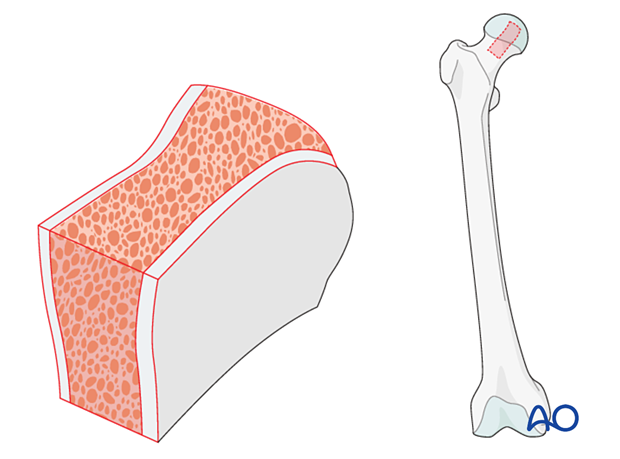Bony reconstruction with augmentation in the glenoid
1. Bony reconstruction with augmentation
Bone loss in the glenoid can be reconstructed using allograft and autograft.
Allograft has a slightly higher resorption rate compared to autograft. However, in large defects, the use of autograft, eg, from the iliac crest, is limited.

A combination of bony reconstruction and metal augmentation is possible.
One-stage reconstruction of the glenoid is possible if primary stable fixation of the glenoid implant in the native glenoid can be achieved.
In more advanced cases, a two-stage reconstruction with bony augmentation in the first stage is recommended.
Graft options
The most common autograft that is currently used is a shaped bi- or tri-cortical iliac crest bone block.

Femoral head allografts are usually an excellent resource for reconstructing glenoid wall defects.
Distal tibial allografts are a useful alternative.

Bone graft placement
Usually, a structural bone graft is needed to recreate sufficient bone stock to ensure secure implantation of a glenoid prosthesis.
In cases where the anterior or posterior wall of the glenoid is still intact, the structural bone graft is contoured and impacted.
If the posterior wall is still intact, the screws are placed from anterior to posterior.

If the anterior wall is still intact, the screws are placed from posterior to anterior.

The screw trajectory should not compromise the space for the primary fixation of the baseplate.

2. Bone replacement by metal prostheses
Metallic reconstruction can be performed using augmented baseplates or custom-made (patient-matched) glenoids.
Usually, metallic augmentation or reconstruction is done as a one-stage operation.
Minor bony defects can be addressed with augmented baseplates.

Custom-made designs are used when there is a large bone deficiency as an alternative to bony reconstruction or if the glenoid is not amenable for bony reconstruction.

Metallic augment placement
Metallic augment placement is performed according to the manufacturer's recommendations.
Screw trajectory is already predefined with minor variability of screw placement.
Providing secure and stable fixation of a glenoid baseplate has been achieved, a glenosphere can be inserted. Depending on the biomechanical requirement a standard, eccentric, or lateralized implant may be used.














